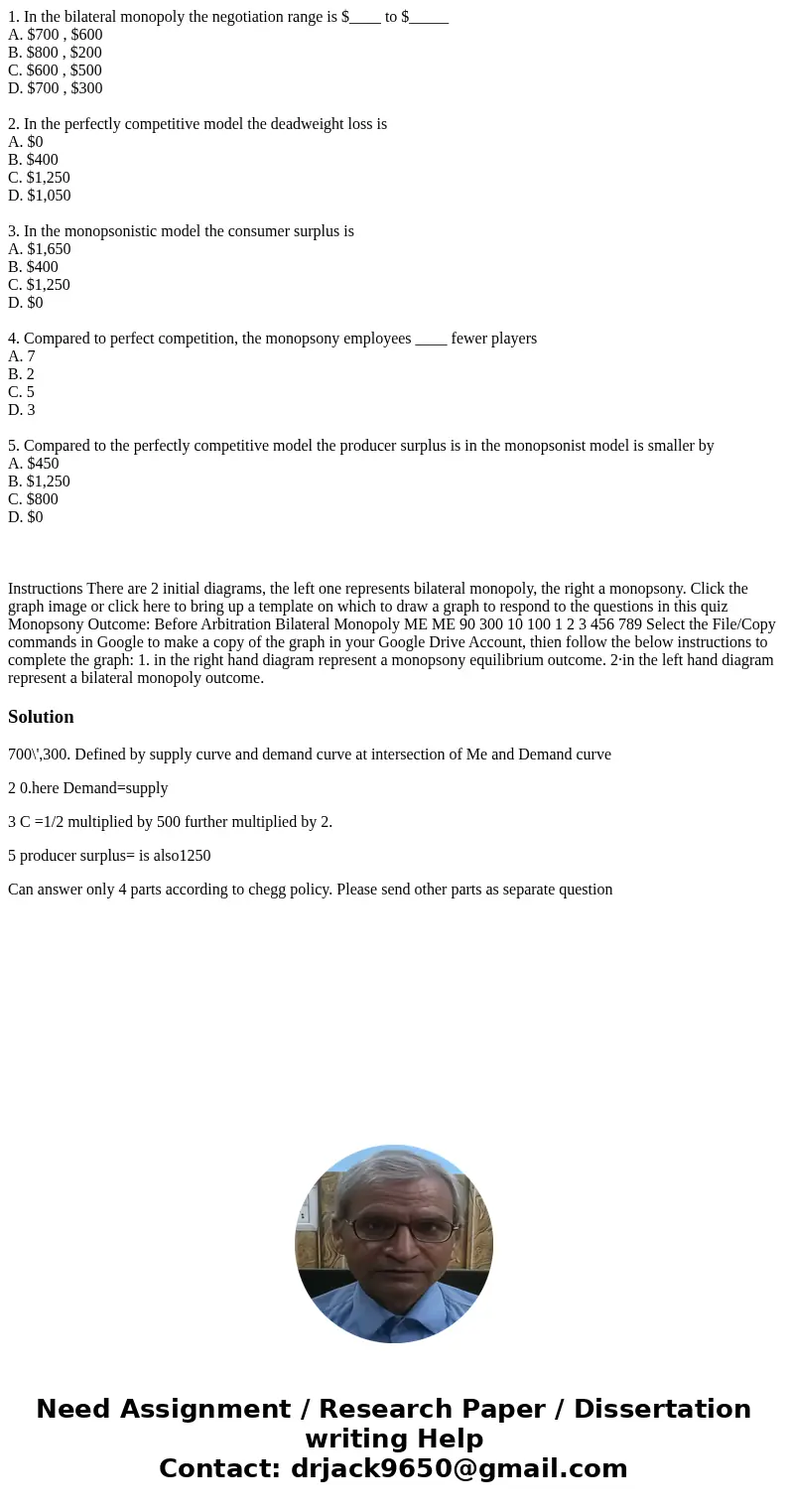1 In the bilateral monopoly the negotiation range is to A
1. In the bilateral monopoly the negotiation range is $____ to $_____
A. $700 , $600
B. $800 , $200
C. $600 , $500
D. $700 , $300
2. In the perfectly competitive model the deadweight loss is
A. $0
B. $400
C. $1,250
D. $1,050
3. In the monopsonistic model the consumer surplus is
A. $1,650
B. $400
C. $1,250
D. $0
4. Compared to perfect competition, the monopsony employees ____ fewer players
A. 7
B. 2
C. 5
D. 3
5. Compared to the perfectly competitive model the producer surplus is in the monopsonist model is smaller by
A. $450
B. $1,250
C. $800
D. $0
Solution
700\',300. Defined by supply curve and demand curve at intersection of Me and Demand curve
2 0.here Demand=supply
3 C =1/2 multiplied by 500 further multiplied by 2.
5 producer surplus= is also1250
Can answer only 4 parts according to chegg policy. Please send other parts as separate question

 Homework Sourse
Homework Sourse